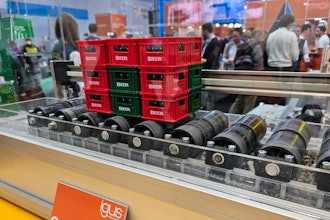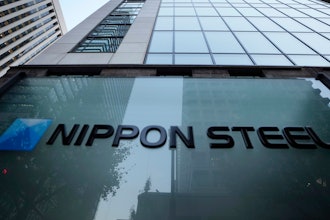 Enhance communications, share best practices, challenge your teams, and build a greater sense of community and sharing by installing a periodic sharing of current works. Let your product development and other project teams present their projects and designs to the rest of your organization in a relaxed setting.
Enhance communications, share best practices, challenge your teams, and build a greater sense of community and sharing by installing a periodic sharing of current works. Let your product development and other project teams present their projects and designs to the rest of your organization in a relaxed setting.
A friend and colleague shared with me one of the practices the business for which he works regularly executes. The product design and development specialty business regularly conducts show-and-tell events. Everyone looks forward to them.
It was a strange conversation on my part. He was telling me about it as part of general conversation as we were walking, so for him it was just an interesting tidbit. However, while he described how his business goes about it, I experienced a flood of thoughts both inspired and reflective.
Numerous times in my career I have longed to be able to share the great elements of the many designs and projects with a greater audience. When I was younger, I admit, there was some desire to show off the really innovative discoveries and inventions our teams had created. As a more mature engineer, the motivation was more a desire to share discoveries that might make things easier for other teams if the lessons could just be effectively shared.
Also, I was struck with a recollection of all the many times I lamented how little I knew about the other people, teams, and projects going on inside of my own business. I hated being surprised at seeing a new product on a retail shelf with our company’s brand name on it, and I had no idea we were working on it or that it had launched.
It made me feel disappointed that communications were so poor. It also made me feel hurt that no one cared to think we, the engineers and other little people, might be interested.
Finally, I recalled that on some occasions, one of my previous employers held a competition for the year’s best programs and projects. I had the good fortune to participate in the competition, presenting one of our business unit’s projects as a representative of the team.
Aside from the good feelings that come from being allowed to participate and compete, I recall how much I really enjoyed meeting other engineers from all around the corporation, seeing their projects, marveling at the inventiveness, the problem-solving, the demonstration, and explanation of advanced engineering skills and techniques, and drooling over the designs and prototypes. It was tremendously impactful to this young (at the time) engineer.
So, as my friend was casually telling me about his business’ show-and-tell practices, I nearly lost my footing. “We should all be doing that,” I thought. Think of all the great sharing and morale that could come from it.
As I pondered the idea, I could only think of two reasons why an organization would not want to do this. The first is the obvious disruption to productivity. The second is the concern for compromising confidential, proprietary, or secret information, especially in government contract service businesses. I think that both concerns can be easily overcome.
Concerning the disruption, I think that there is more to be gained than lost in the way of productivity. When people feel proud, encouraged, appreciated, and part of something greater than themselves, they are eager to proceed to the best of their ability and endurance. Also, there are simple ways to minimize the disruption.
Concerning the security of information we just need to make some decisions. First, I suspect that the threat is much smaller than our initial reaction might lead us to fear. It would be a very rare case where everyone who would observe or participate in the show-and-tell isn’t already contractually bound to preserve secrecy. A simple reminder that the information shared is not to be discussed off the premises or with visitors should suffice.
In some cases a team may be working on something Top Secret and the rest of the organization may not be authorized to knowledge of the project. In such cases, the participants probably already know the rules and are resigned to not sharing. Their feelings should not be hurt.However, after the project is complete and made public they might share, or there might be some elements of overcoming challenges or using techniques that could be shared without compromising sensitive information.
Consider the benefits that might come out of show-and-tell practices.
- Improved communication concerning active projects, people, and teams
- Showcase best practices (nothing helps instill new methods like watching your peers succeed because they applied them)
- Increased sense of urgency to do well and demonstrate high performance at show-and-tell
- Greater confidence in people, teams, and methods because of the problem-solving demonstrated at show-and-tell
- Share ideas and inspire innovation
- Get people excited about what they are doing, as well as what is going on in the organization
- Invite others to share insights and ideas to improve designs and solutions
- Improved communications, performance, sharing of ideas, and confidence in other people and teams increases morale and productivity
I’m sure there are other benefits that might come out of the practice that I haven’t experienced or thought of. Even so, the list above is reason enough for me to be willing to let things relax a little on a Friday afternoon for 30 minutes to an hour.
In keeping with a desire to get the most out of a show-and-tell practice for the least disruption in productivity, and to keep it constructive and fun, instead of burdensome and dreaded, here are some Do and Don’t thoughts.
Do:
- Keep the presentations short
- Provide an atmosphere where participants and observers are encouraged to relax and enjoy, rather than challenge and argue (my friend’s business offers beverages and happy-hour-style snacks to make it both social and to encourage participation)
- Make it fun
- Talk about the challenges overcome, inventiveness, and clever solutions
- Show how methods or skills were successfully applied
- Talk about the importance of the project to the business
- Show off the team – it should be as much about people as it is about products
- Invite everyone, not just local personnel or certain functions
- Make it about success and demonstration, not about shortcomings or interrogations
- Bring working parts, prototypes, designs, demonstrations, and other hands-on elements whenever possible
Don’t:
- Don’t require extra work to prepare presentations for the show-and-tell. Make the practice well known to teams in advance of the event so they can set aside slides, notes, drawings, parts, prototypes, analyses, or lessons as they occur and have them ready for show-and-tell when the time comes. It should take no more than 30-minutes to prepare.
- Don’t leave teams behind. It may not be practical in a global, diversified corporation to show every project to every employee, but do the best that is practical. If a team doesn’t get to show its effort, it will be perceived as being unworthy and the whole benefit of morale and excitement will be lost.
- Don’t make the leader do the presenting. Allow the team to select its presenters. Encourage those who want to stand up and present the opportunity. Some will not want the spotlight, while some might benefit from the public speaking opportunity. Instead of mandating another responsibility for the project lead, use the opportunity to encourage or develop other team members.
- Don’t schedule the show-and-tell at a critical time for the team. Schedule it at a time when the team is waiting for test results or for suppliers to finalize production readiness or some other slow/waiting period.
- Don’t turn the show-and-tell into a design review. Design reviews should be done in a particular way with a particular audience, not the whole business all at once. Show-and-tell should be about communication and fun.
- Don’t turn it into an overblown production. Keep it simple. Use existing project information. Let it be somewhat improvised and spontaneous. Let the team plan and select what to share to demonstrate its best elements. Don’t let it derail the project while people prepare.
A great deal of disappointment and angst that I experienced over the years might have been resolved through the practice of a show-and-tell of projects, designs, and solutions. Give some thought to the benefits to communications, idea sharing, morale, and innovation that might come from the practice.
If you decide, as I have, that the practice warrants some experiments and/or institution, then be sure to keep the disruption to a minimum. Don’t let it become an event that stops all progress while the team prepares.
I really believe that the benefits of a show-and-tell practice are numerous and profound. As my friend described his business’s practice to me I wished that I had implemented the so-simple idea years ago. Take the idea to heart, and give it a try. Discover the benefits for yourself and for your group.
Stay wise, friends.
If you like what you just read, find more of Alan’s thoughts at www.bizwizwithin.com.






















